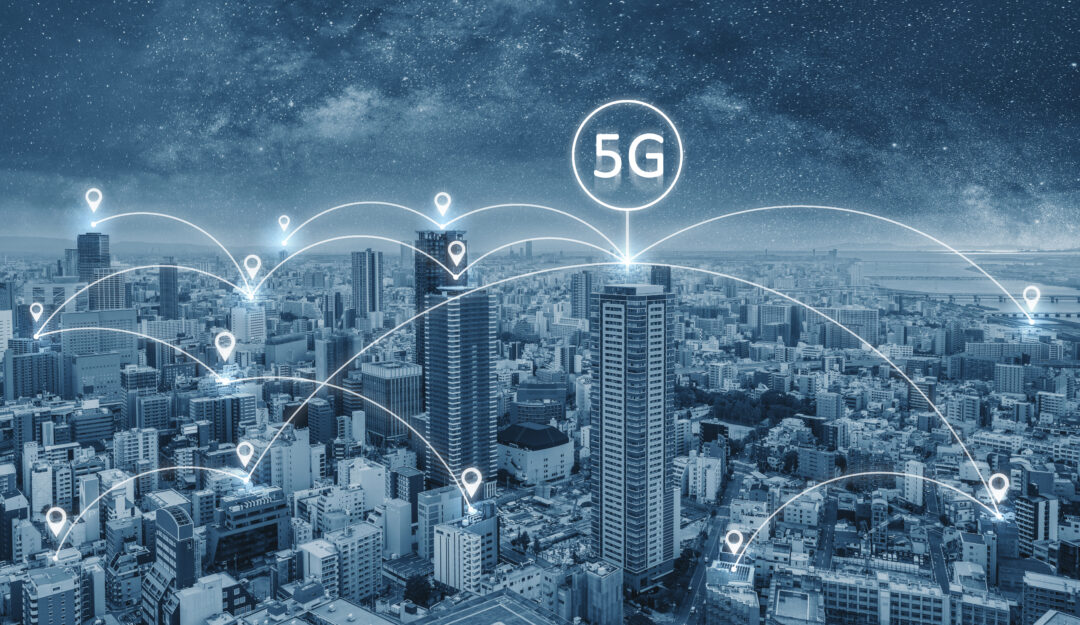The expectation of 5G could not be higher. Consumers are hoping for more reliable broadband connection, ultra-low latency uses cases (e.g., the autonomous car) and rapid download capabilities. For businesses, the promise is even larger. The deluge of news services, benefits and opportunities made possible with this technology, some as yet unimagined, represent a new era of digital transformation. Despite the pandemic and its associated economic constraints, 5G networks have continued to be launched across the world and it is predicted that operators will spend 80% of sector capex on 5G over the coming five years (reaching 45% of the global population).
Yet 5G is an enormous investment. For Communications Service Providers (CSPs) implementing this infrastructure, they must find solutions to properly manage the transition from 4G to 5G. After nearly two years of trials and pilots, 2022 will see stand-alone cores being engineered across the country. And while expectation is high, CSPs will initially only be prioritising one thing; how they can successfully deliver this technology in the most cost-effective way.
What will happen in telecoms in 2022?
The state of 5G rollouts today
One of the challenges that 5G has been pitted to solve is the digital divide between rural and urban areas. But can higher speed cellular support connectivity in remote areas? Although more reliable connection is a key tenet of 5G, this technology will not be able to reduce the Cost Per User (CPU) in rural locations. In fact, the way that 5G is put together means that the network will actually run across many more, much smaller cell sites, and it will be a significant challenge to implement these across all locations.
For example, 20 years ago with 2G, only 1000 cell towers were needed to reach the majority of the UK. In 2017 and as 4G dominated, this number had already increased to around 1 million. For 5G to reach the entire country, this would have to grow again another ten times. The important question here is whether service providers are willing to implement this vast infrastructure, and whether it would be of any benefit by the time the next generation of technology emerges. Therefore, the issue that connectivity is better in urban environments will exist far beyond 2022.
Instead, across the next year, we will see CSPs looking for innovative solutions to break the cost curve of 5G and cope with the inevitable data deluge this evolution brings. In the current environment, network probing costs often have a directly proportional relationship to throughput processing capabilities. This means that with more data traffic comes a higher cost of the probes monitoring it. Yet tooling expenditure cannot continue to increase alongside data volumes – this is an unsustainable model in the 5G era. One solution that we expect to see utilised moving forward is packet reduction. This technique makes it possible to retain critical data that may have been dropped from a network previously, and instead only send relevant traffic to the existing probing infrastructure. This not only reduces the volume of traffic going to network probes, but it also increases the efficiency and data quality available to the customer service team.
The importance of visibility
Observability into a network can be an underestimated solution to improve operations and reduce cost. To optimise a network – through packet reduction or otherwise – visibility into all moving data is essential. Put simply, if you cannot see something, you cannot respond to it. This can be a new opportunity to streamline processes, or to protect against a dangerous threat actor. Visibility is therefore going to play a huge role in the migration from 4G to 5G over the next few years. This is particularly pertinent as CSPs will deploy 5G largely on a sub virtual, container-based environment, typically the hybrid cloud. A hybrid infrastructure is increasingly common, yet organisations often fail to leverage the correct tools that allow observability across all environments. Therefore, security blind spots can quickly cause issues, and network performance will suffer simultaneously. For CSPs looking to streamline operations, ensure their investment into 5G is worthwhile, and deliver the connectivity they’ve promised, a unified view into all environments must be a top consideration.
Traffic intelligence is becoming indispensable for CSPs and visibility is central to ensuring the right intelligence can be leveraged to boost customer experience and optimise operations. As we enter a new year, cost will be the central priority, while enabling all the exciting new use cases will follow shortly after. For this new generation of technology, 2022 will be the year in which 5G foundations are built, network migration is enabled and cost efficiency is optimised.








